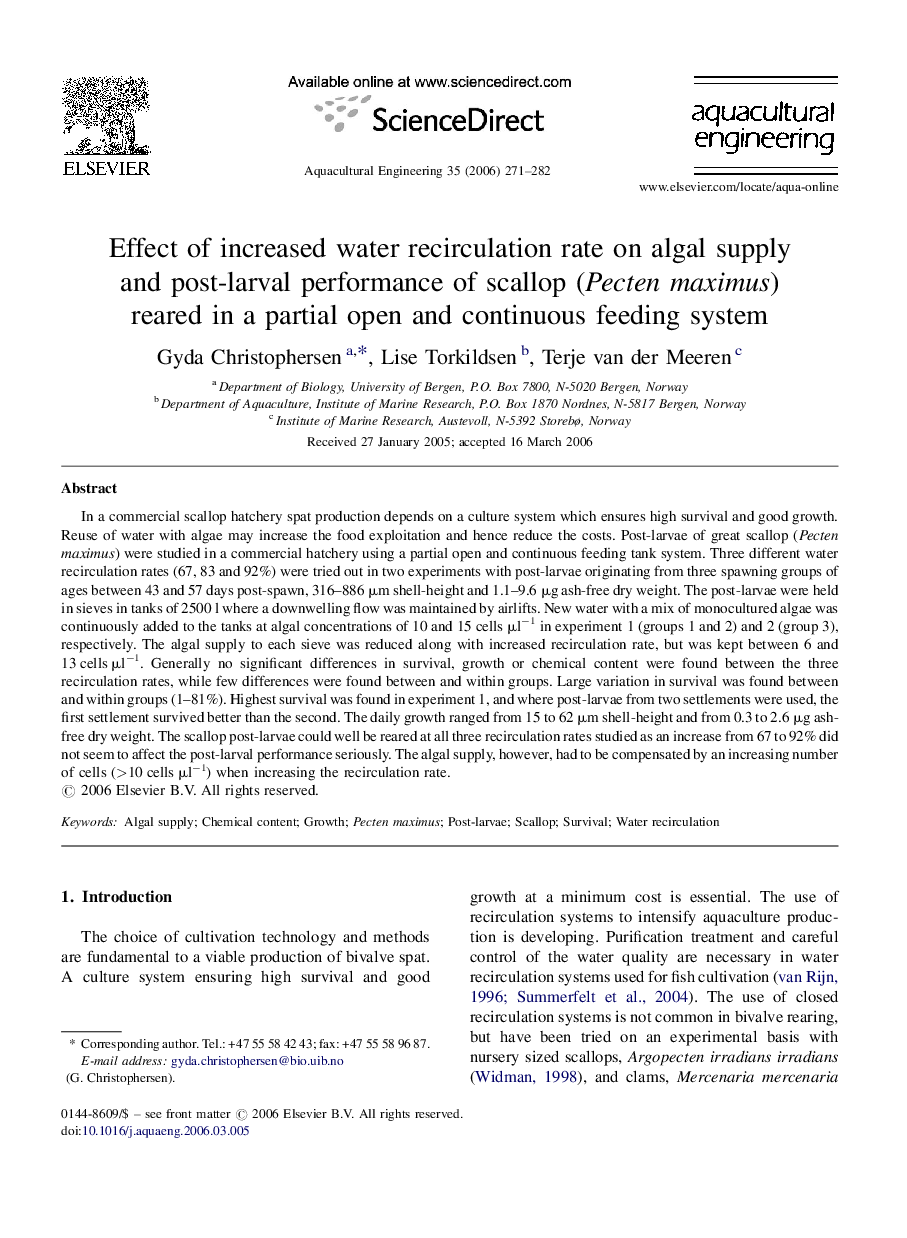| Article ID | Journal | Published Year | Pages | File Type |
|---|---|---|---|---|
| 4527495 | Aquacultural Engineering | 2006 | 12 Pages |
In a commercial scallop hatchery spat production depends on a culture system which ensures high survival and good growth. Reuse of water with algae may increase the food exploitation and hence reduce the costs. Post-larvae of great scallop (Pecten maximus) were studied in a commercial hatchery using a partial open and continuous feeding tank system. Three different water recirculation rates (67, 83 and 92%) were tried out in two experiments with post-larvae originating from three spawning groups of ages between 43 and 57 days post-spawn, 316–886 μm shell-height and 1.1–9.6 μg ash-free dry weight. The post-larvae were held in sieves in tanks of 2500 l where a downwelling flow was maintained by airlifts. New water with a mix of monocultured algae was continuously added to the tanks at algal concentrations of 10 and 15 cells μl−1 in experiment 1 (groups 1 and 2) and 2 (group 3), respectively. The algal supply to each sieve was reduced along with increased recirculation rate, but was kept between 6 and 13 cells μl−1. Generally no significant differences in survival, growth or chemical content were found between the three recirculation rates, while few differences were found between and within groups. Large variation in survival was found between and within groups (1–81%). Highest survival was found in experiment 1, and where post-larvae from two settlements were used, the first settlement survived better than the second. The daily growth ranged from 15 to 62 μm shell-height and from 0.3 to 2.6 μg ash-free dry weight. The scallop post-larvae could well be reared at all three recirculation rates studied as an increase from 67 to 92% did not seem to affect the post-larval performance seriously. The algal supply, however, had to be compensated by an increasing number of cells (>10 cells μl−1) when increasing the recirculation rate.
